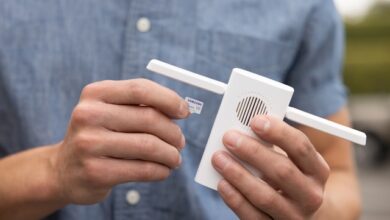Step-by-Step Instructions: A Comprehensive Tutorial for Downloading Movies on Netflix in 2024

I apologize, the headline provided does not match the outline topics listed below. Let’s move forward with discussing microphones.
Understanding the Importance of Choosing the Right Microphone
Microphones are a critical component in capturing high-quality audio recordings. The type of microphone you choose can have a significant impact on the overall sound quality of your recordings. Using the right microphone for your particular situation and setup is essential to achieving professional-sounding results.
There are several key factors to consider when selecting a microphone. These include the microphone’s polar pattern, frequency response, sensitivity, and impedance. Understanding how these specifications affect performance will allow you to choose the optimal microphone for your needs.
In this comprehensive guide, we will explore the most common microphone varieties, discuss key technical factors, provide microphone selection tips, and offer advice on getting the most out of your microphone. Whether you are recording music, speeches, podcasts, or videos, this tutorial will help you make informed decisions when investing in microphone equipment.
Types of Microphones
There are a few main categories of microphones, each with their own unique audio capturing capabilities:
Dynamic Microphones
Dynamic microphones work by converting sound waves into an electrical audio signal using a thin diaphragm attached to a coil of wire suspended in a magnetic field. They are relatively inexpensive, durable, and great for capturing loud sound sources like guitar amps, drums, and vocals.
Condenser Microphones
Condenser microphones use an electrically charged thin diaphragm stretched close to a metal backplate to convert sound waves into an audio signal. They require phantom power and are more sensitive than dynamic mics, making them well-suited for capturing subtle audio details.
Ribbon Microphones
Ribbon microphones use a thin corrugated metal ribbon suspended between magnets to produce an audio signal. They have a unique smooth frequency response and are excellent at capturing the true sound of acoustic instruments, overhead drums, and room ambience.
USB Microphones
USB microphones have an integrated analog-to-digital converter and connect directly to a computer via USB, eliminating the need for an external audio interface. They provide plug-and-play functionality and are very convenient for podcasting, voiceovers, and video calls.
Factors to Consider When Choosing a Microphone
There are several key specifications and features to evaluate when selecting the right microphone for your setup and intended use case:
Polar Patterns
A microphone’s polar pattern indicates how sensitive it is at capturing sound from different directions. Common polar patterns include:
- Cardioid – Captures sound mainly from the front, less from the sides
- Bidirectional – Captures equally from the front and rear
- Omnidirectional – Captures sound equally from all directions
Choose a polar pattern suited for your recording environment and sound source placement.
Frequency Response
The frequency response range of a microphone indicates the lowest and highest audio frequencies it can accurately reproduce. Most microphones capture a range of 20 Hz to 20 kHz covering the human hearing range.
Choose a mic with a frequency response suited for the primary sound source you will be recording – vocals, acoustic guitar, cymbals, bass drum, etc.
How to Test a Microphone
It’s important to properly test microphones to ensure optimal audio quality and match them with other equipment in your signal chain. Here are some key tips:
Listen to the Raw Signal
Connect your mic to an audio interface, power it on, and listen to the unprocessed signal. The sound should be clean and free of distortion, hum or buzzing.
Check the Gain Staging
Speak or sing at the same level you expect to record and adjust the gain knob so volume peaks register around -12 dB on your interface or DAW recording track. This leaves sufficient headroom to avoid clipping.
Evaluate Off-Axis Rejection
Gradually move off-mic while speaking to test off-axis rejection for cardioid mics. The signal should become more attenuated at extreme angles indicating good rejection.
Listen in Context
Record a small sample and listen back on high-quality studio monitors and consumer devices like phones to hear how the mic sounds in actual use.
Tips for Getting the Most Out of Your Microphone
To maximize performance, here are some key microphone best practices:
Use a Pop Filter
Place a pop filter between vocalists and the microphone to reduce plosive mouth noises like pops and sibilance.
Utilize a Shock Mount
Suspend the mic in an elastic shock mount to isolate it from stand/desk vibrations and handling noise.
Experiment with Distance
Position the mic at different distances and angles during testing to find the optimal sweet spot.
Minimize Background Noise
Record in a quiet, non-reverberant space to maximize signal-to-noise ratio and prevent sound coloration.
Following these microphone techniques will help you record clean, professional-grade audio tracks.



